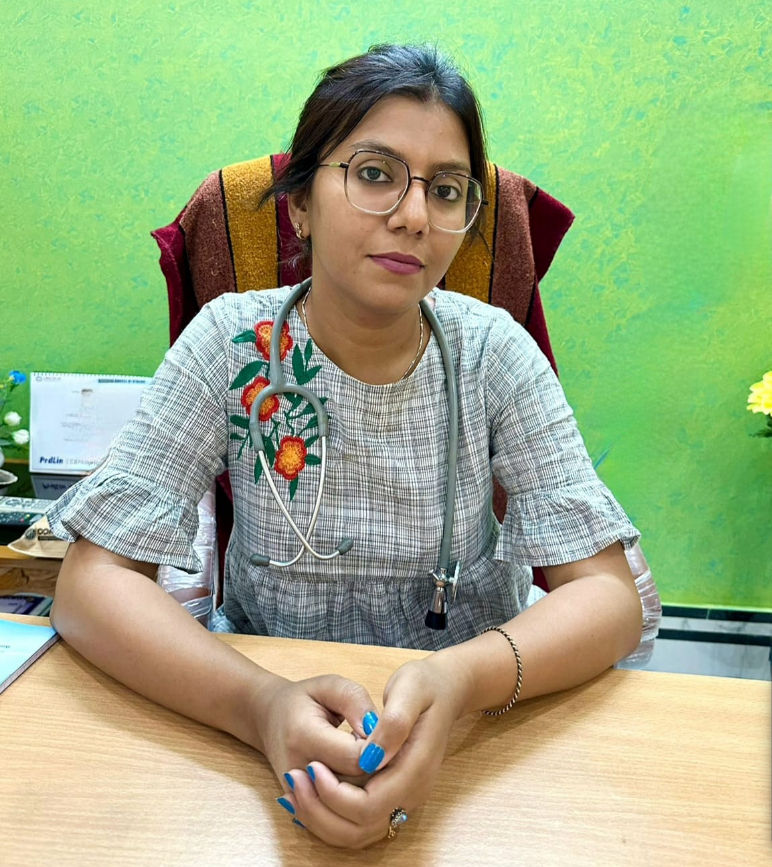Nose Foreign Body Management
Children often put things in their nose out of curiosity which lead to various complications. So, know the nose foreign body management to prevent it.

Written by
Last updated on 3rd Jul, 2025
Children often put foreign objects in their noses out of curiosity, like pieces of toys, clay, small tissue papers, erasers, foam, and even food particles. These can obstruct the airflow and cause breathing problems, infections, nosebleeds, or serious injuries. In extreme cases, nasal foreign bodies can lead to life-threatening situations that require emergency care.
Understanding the causes, symptoms, and appropriate management of nasal foreign bodies is crucial for timely and effective intervention, preventing further complications.
Symptoms of a Foreign Body in the Nose
The child may not tell the parents immediately about putting something in the nasal passage. However, with children, parents always have to be alert, and knowing the symptoms of foreign bodies in the nose can help them provide immediate first-aid care and seek medical attention.
Some of the initial signs of the presence of a foreign body in the nose are:
Nasal drainage with grey or red colour
Signs of infection accompanied by foul odour
Difficulty in breathing due to obstructed nasal passage
Whistling sounds during inhalation and exhalation
Irritability, especially in infants
Pain in the nose that can worsen with time
Nose bleeds in cases of sharper foreign bodies
Tenderness in the nose along with swelling
If the foreign nasal body is not removed in time, it can lead to the following complications:
Epistaxis of excessive nasal bleeding
Severe infection accompanied by inflammation of the inner lining of the nose
Facial cellulitis
Periorbital cellulitis
Sinusitis
Septal perforation
Meningitis
Diagnostic Approaches
Doctors use both imaging techniques and evaluation of physical symptoms to diagnose thepresence of a foreign body in the nose and make accurate prognosis.
1. Physical Examination Techniques
Physical evaluation of nasal foreign objects includes:
Assessing symptoms like facial pain and breathing difficulties
Discussing the events that could have led to the child putting the foreign object inside his or her nose
Checking for tenderness and swelling around the nose
Taking a swab of the nasal discharge to determine the presence of an infection
Visualising the inside of the nasal chamber using an endoscope for more clarity
2. Use of Imaging Studies
Doctors may also recommend an X-ray of the face so that they can determine the exact position of the foreign particle inside the nasal passage. Also, they can identify if there is any septal perforation and find the source of nasal bleeding.
Immediate Management
If the child has put anything unwanted in the nose, providing immediate first-aid can help manage the symptoms and reduce the complications. This will give enough time to seek emergency medical care. Such measures include –
Help the child breathe through the mouth instead of the nose, as inhalation and exhalation could push the foreign object further into the nasal cavity.
Gently press the unaffected nostril and ask the child to blow softly through the open nostril. It may help push the object out if it is present near the opening.
Parents should seek emergency medical attention to remove the foreign object stuck in the nose if:
Breathing problems are severe due to nasal obstruction
Nasal discharge has a greyish colour, indicating an infection
Excessive nosebleeds
Sudden inflammation and tenderness around the nose
Medical Intervention
If the symptoms are severe and the first-aid treatment has failed to remove the foreign object, medical intervention will be required. The doctors will use different techniques to remove the object stuck in the nasal cavity, like:
A suction machine
Inserting a thin instrument to scoop out the object
Performing a surgery in case the above two methods fail
Additionally, the following are the tools and equipment used to remove unwanted objects in the nostril.
Grasping instruments like mosquito clamps, alligator forceps, and bayonet forceps
Balloon-tip catheters
Yankhauer and flexible suction catheter
Hook curettes and wire loop
Nasal speculum
Post-Removal Care
Once the foreign object is removed from the nasal passage, proper post-op care is needed for smoother recovery and minimising the complications. Initially, individuals should look for the following complications that could develop after the nasal foreign object removal:
Post-op infection
Nasal bleeding
Swelling and tenderness
Breathing difficulties
Besides monitoring the complications, parents should follow up with the doctor to check the health progress and determine if any further treatment will be needed to alleviate the symptoms.
Prevention of Nose Foreign Bodies
Foreign bodies can prove fatal if not removed on time. Hence, parents should educate their children and caregivers and implement a few childproofing tips to reduce the risks significantly.
Childproofing Tips
Supervise the children, especially if they are playing with small toys like marbles, erasers, foam, and other such objects
It’s better to keep sharp objects out of their reach
Install a CCTV camera to keep an eye on the children
Educating Children and Caregivers
Additionally, it is important to educate children about the dangers of putting any foreign object in their noses without scaring them. Proper education about the fatalities caused by nasal foreign bodies should also be given to caregivers, as they spend quite a long time with children. This can prevent the danger and keep the child safe.
Complications and When to Consider Surgery
Putting a foreign body in the nose can lead to severe complications, and sometimes, doctors may have to consider surgery to remove it. If the object is too large or has been placed further inside the nostril, it can lead to severe infection and breathing problems. These conditions require immediate medical attention, and the doctor may opt for surgical removal if other methods fail to remove the object.
Sometimes, foreign bodies are beyond the reach of a suction or scooping tool, so they can’t be removed using conventional practices. Under such conditions, surgery is the best possible treatment option. The doctor may take X-rays and other imaging scans to determine the course of surgery and make an accurate prognosis.
Special Considerations in Paediatric Cases
When it comes to handling paediatric cases, doctors often need to make special considerations like a cooperative treatment strategy. This helps them deal with unique challenges presented by the children:
Children, especially infants, can become irritated when foreign objects are stuck in their noses.
They may not cooperate with the doctor due to fear and anxiety.
Removing foreign objects from the nose might not be easy if the child is conscious and fully awake, which is why many doctors prefer to put them under general anaesthesia before they can remove the object.
Some of the leading strategies for cooperative treatment include:
Explain the procedure clearly to children using appropriate language so that they can remain calm and won’t become anxious.
Distraction can help divert a child’s attention from the doctor, allowing them to cooperate passively with the treatment.
Parents or caregivers should be present with the child so that the little ones can feel at ease.
Conclusion
Foreign bodies, when stuck in the nose, can cause severe complications and put a child’s well-being at risk. Providing immediate first-aid care can help remove the trapped particle at home. However, in case the complications are severe, medical intervention will be needed. It is important to address this issue with care and focusing on prevention should be the priority for the parents.
Consult Top ENT Doctor
Consult Top ENT Doctor

Dr. Nishant Rana
Ent Specialist
8 Years • MBBS. MS ENT
Delhi
Apollo Hospitals Indraprastha, Delhi

Dr. Sayan Hazra
Ent Specialist
8 Years • MBBS, MS (ENT), DNB (ENT)
Kolkata
Dr Sayan Hazra ENT Clinic, Kolkata

Dr. Safina Kauser
Ent Specialist
7 Years • MBBS, MS
Bengaluru
Apollo Clinic, JP nagar, Bengaluru

Dr. Madhurima Mandal
Ent Specialist
6 Years • MBBS, MS Otorhinolaryngology
Bansdroni
Siddhita Healthcare., Bansdroni

Dr. Riya Das
Ent Specialist
8 Years • MBBS, MS ENT(oto rhino laryngology)
East Midnapore
VIVEKANANDA SEBA SADAN, East Midnapore